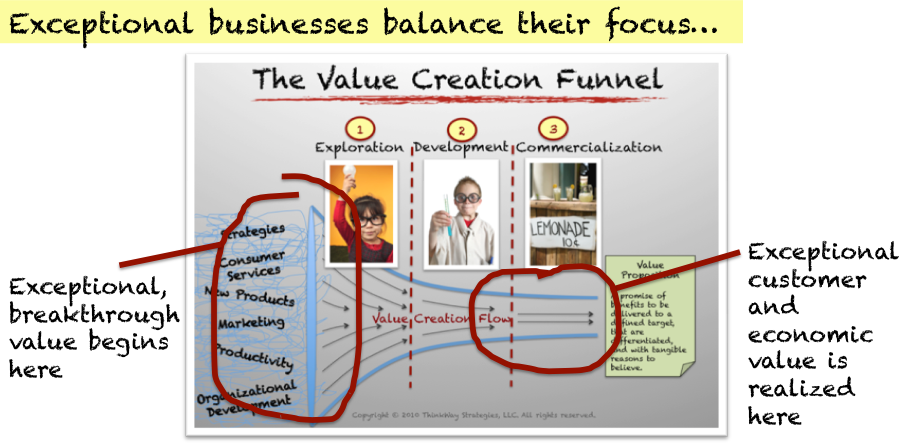Innovation is the fuel for growth in business. For you Star Trek fans, it’s the “dilitium crystals” for the starship Enterprise. Yet research reveals only a few companies in a few industries are producing anything innovative. The National Science Foundation Business R&D and Innovation Survey showed that only 9% of public and private companies in the U.S. had any product, service or process innovation between 2006 and 2008. So, what’s going on?
Ideas are generated at the Exploration end of the Value Creation Funnel™. Entrepreneurial companies can get stuck here: they have a great idea but don’t have the skills or resources to move the innovation to the commercialization end of the funnel where it is monetized and creates value. Mature companies get stuck at the commercialization end of the funnel. The ability to standardize, scale and create economic value creates a bias against innovation. Vijay Govindarajan, Professor in Residence and Chief Innovation Consultant for GE and author of “Ten Rules for Innovation” and “The Other Side of Innovation” in an article in The Economic Times puts it this way:
“A large company has a set of core businesses that make them successful. They scale up by making every task repeatable and predictable. That is the enemy of innovation.”

Exceptional companies avoid either “innovator’s bias” or “production bias” by designing innovation into their business model and culture. Govindarajan cites two examples. Apple is often cited for their innovative suite of products but it’s clear they are also excellent at monetizing their innovations and creating economic value. The other company Govindarajan cites is Nucor, a steel company that has been growing 17% a year. Nucor relies on every employee innovating and contributing to the success of the business.

Whether your industry is known for innovation (like Apple’s) or innovation seems to be a rarity (like the steel industry), innovation is the fuel for growth. Designing innovation into your business model and culture will keep your starship and its products from being inexorably pulled into the black hole of indifference.